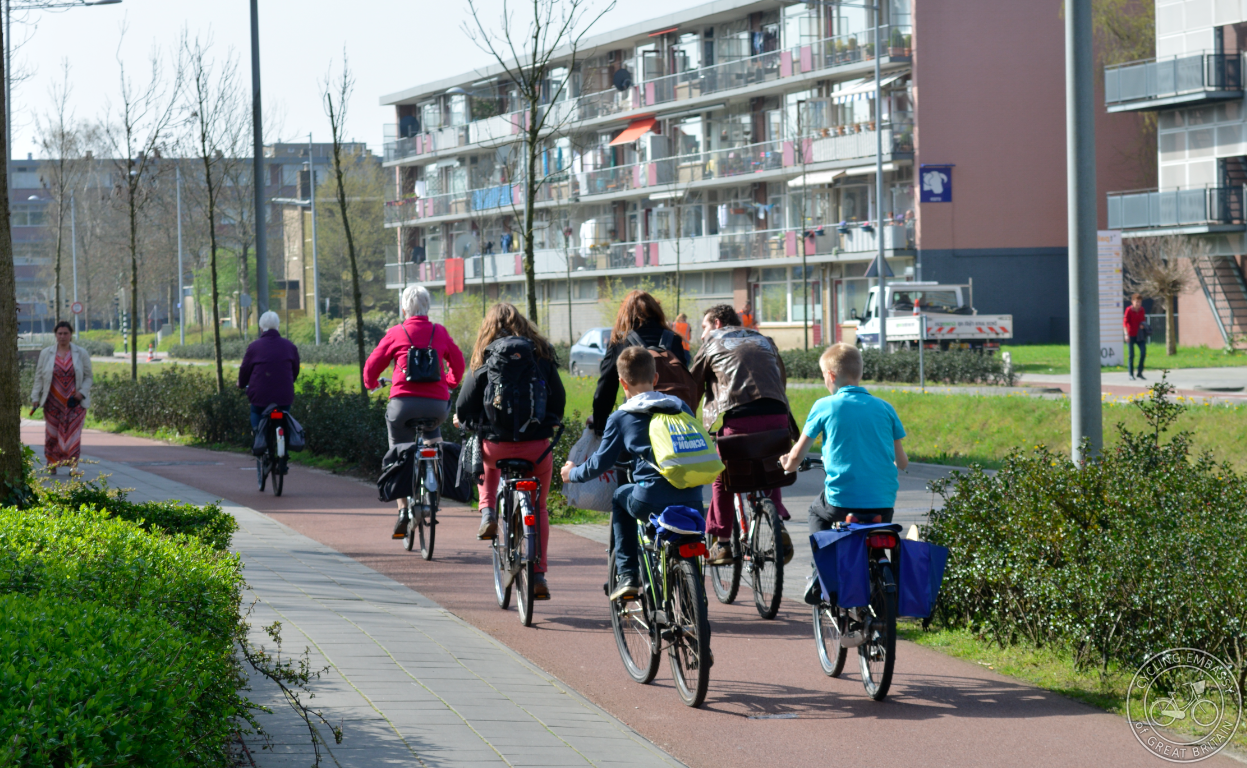Provision on links
 The form of cycling provision appropriate on a particular link is determined primarily by the volume and speed of motor traffic on it.
The form of cycling provision appropriate on a particular link is determined primarily by the volume and speed of motor traffic on it.
On roads that carry a higher volume of motor traffic, or traffic travelling at higher speeds, physical separation becomes increasingly appropriate. Conversely, on streets that have low speed limits and very little motor traffic, cycling is effectively already separated from the stress and nuisance of motor traffic, and physical separation is not required.
What type of treatment is appropriate on a given link, carrying a certain volume of motor traffic travelling at a certain speed, can be determined from speed/flow diagrams. We have adapted these recommendations from the CROW manual; one for built-up areas, another for links outside built-up areas.
The governning principle is that cycling should be 'as safe and comfortable as possible'.
Built-up areas
The table below shows the suggested treatments for links in built-up areas, according to the speed limit, the type of the road or street (how many lanes it has, for instance) and the volume of motor traffic it is carrying.

Outside built-up areas
The table below shows the suggested treatments for links outside built-up areas, according to the speed limit, the type of the road, and the volume of motor traffic it is carrying.

Explanation
A principle of sustainable safety is that roads or streets should aim to have a single function. While this often cannot be achieved in practice, it informs the classification used here. Access roads should only serve to allow access, to houses, schools, shops, workplaces, and so on. They should not carry through traffic. By contrast, through roads move high volumes of motor traffic. Distributor roads connect the two.
'Combined traffic' simply means that bicycles are combined with motor traffic in the way a street is designed.
A cycle street is an acess road that is designed as a cycle track; motor vehicles drive on the cycle track purely to access properties.
Cycle lanes are on-road lanes, delineated solely by paint.
Cycle tracks run parallel to roads, divided from them by physical separation in the form of kerbing, often combined with parking and/or a verge.
A 'parallel road' is an access road for properties running parallel to our main road, open to motor vehicles, but not carrying through traffic.
'PCU' is an abbreviation for Passenger Car Unit, a more precise measure of the nature of motor traffic than a simple vehicle count.
